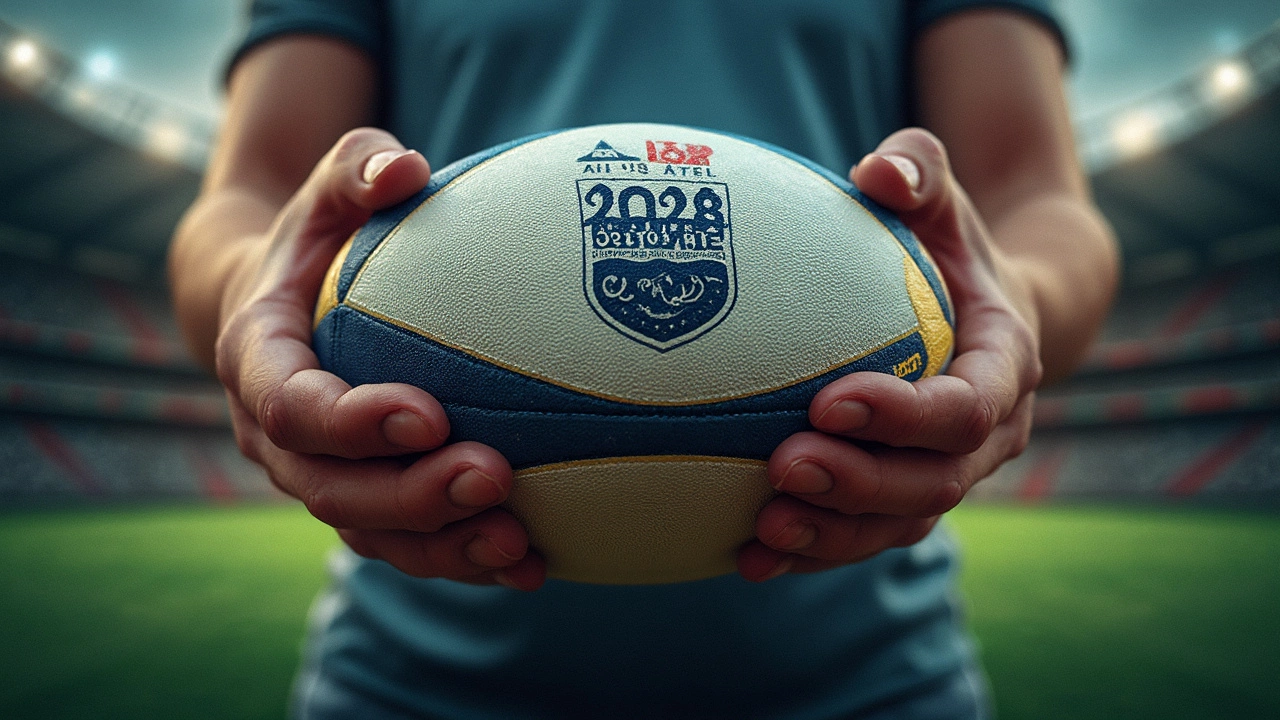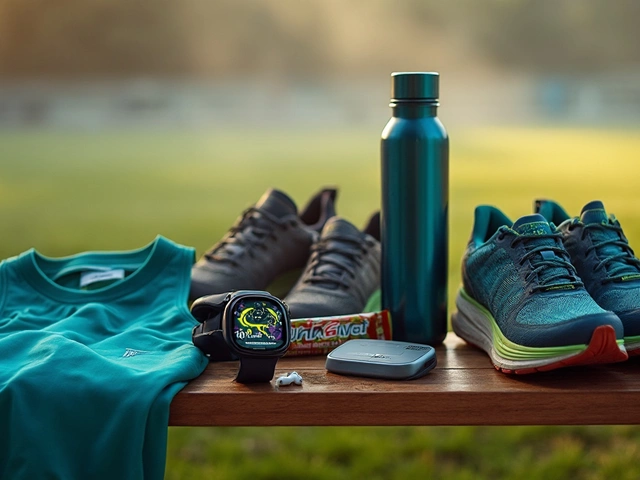Sports Equipment Characteristics: What Really Matters

Ever bought a set of tennis balls that felt flat by the third match or a soccer cleat that fell apart after one season? That’s not just unlucky shopping—it’s usually because of missing out on a few key characteristics that make sports equipment reliable.
The right quality gear can make all the difference, even if you’re a casual player. Stuff like materials, fit, and built-in safety tweaks are what keep your focus on the game instead of worrying about broken straps or bruised ankles. Most athletes, from weekend warriors to pros, care way more about how equipment performs than how it looks on social media.
So, if you want to get more out of your workouts, fewer injuries, and actually enjoy your sport, understanding what to look for in your gear is huge. Let’s get into what separates good equipment from the junk that clutters up gym closets and garages.
- Material Quality: Why It Matters
- Durability and Longevity
- Design and Functionality
- Safety Features to Look For
- Comfort and Fit
- Tips for Making the Right Choice
Material Quality: Why It Matters
If you’ve ever wondered why a $150 basketball outlasts cheap $20 ones, it’s not luck. Material quality is the game-changer. The right material keeps your stuff working longer, feeling good, and actually protecting you when you need it.
Take helmets, for example. Top-level football helmets use polycarbonate shells for impact resistance, while budget models might go with basic plastic that cracks way easier. With tennis racquets, high-quality graphite or carbon fiber offers better control and lasts many seasons, compared to aluminum or wood that warps or loses tension fast.
Manufacturers don’t just pick materials at random—they run tests to compare strength, weight, and flexibility. Here’s how common materials stack up in some popular gear:
| Type of Equipment | Main Material | Why It’s Used |
|---|---|---|
| Soccer Ball | PU Leather | Soft touch, stays round, handles wet weather |
| Bike Helmet | Polycarbonate/EPS Foam | Impact absorption, lightweight, won’t break easily |
| Running Shoes | Knit mesh/rubber | Breathable, flexible, grippy soles |
| Basketball | Composite Leather | Durability, good grip, feels good in hand |
| Hockey Stick | Carbon Fiber | Strong, lightweight, powerful shots |
If you’re buying gear, look for quality cues: thicker stitching on gloves, sturdy joints on scopes, or solid zippers on bags. Some brands share their lab test numbers, but even reading reviews about how long stuff lasts tells you a lot. Cheap gear almost always uses lower-grade materials, which means more breakage and replacements.
At the end of the day, spending a bit more on higher quality sports equipment usually means fewer headaches and, honestly, more enjoyable playing time. It’s just not worth cutting corners if you’ll end up replacing it five times as often.
Durability and Longevity
If your gear breaks down after a few games or gym sessions, what’s the point? Sports equipment is supposed to handle serious use, sweat, and sometimes even the weather. Durability means your stuff holds up—not just after a few weekends, but month after month.
Materials are a big deal. For example, pro-quality basketballs are made from genuine leather, which gets better with use, while cheaper versions use rubber or synthetic covers that can split faster. Carbon fiber is a go-to for bikes and tennis rackets because it's strong and light without being bulky. Even soccer balls vary—a FIFA-certified match ball must pass strict durability tests, like withstanding over a thousand high-impact kicks without losing shape or pressure.
Don’t just trust a flashy brand name or cool design. If you’re buying online, check out user reviews on how long a set of golf clubs or a yoga mat actually lasts. Worn-out stitching on boxing gloves, cracked plastic on helmets, or faded resistance bands aren’t just annoying—they can hurt your performance or even risk injury once they go soft or fragile.
Here’s what to look for to make sure your gear will last:
- Sturdy seams and reinforced stress points for anything with fabric (think gloves, jerseys, pads).
- High-quality materials—real leather, heavy-duty plastics, steel instead of hollow aluminum for weight-bearing parts.
- Care instructions—some gear lasts way longer if you actually follow washing or storage tips.
- Warranty or quality guarantees. Brands that back up their gear for a year or more usually make stronger stuff.
Taking care of your equipment matters, too. Tossing wet shoes in your bag or leaving balls in the sun will age them fast. Store things right, clean them after use, and check now and then for any wear or loose parts—small fixes early on beat a big failure right when you need your gear most.
Design and Functionality
Sports gear has to do more than just survive a few kicks or swings—it needs to actually help you play better. That’s where smart design steps in. Every type of equipment, whether it’s a basketball, helmet, or running shoe, comes with shapes and features meant to boost performance, not just look cool on a shelf.
Take running shoes for example. The way the sole is shaped isn’t just for style points. Brands spend tons on research so the tread gives grip, and cushion lines up with where your foot takes the most impact. Same goes for tennis racquets—modern ones use lighter but stronger materials, so you swing faster and hit harder without extra strain. It’s all about timing power and comfort.
Functionality comes down to these main questions: does the gear do what you need it to? Can you use it comfortably, quickly, and safely, even under stress? For example, a football helmet has built-in airflow and strategic padding to cut down sweat and reduce chances of a concussion. Or think of adjustable bike seats—you can tweak the height or angle to get the best pedaling motion, which matters way more than color or brand.
- Good sports equipment design usually features lightweight build without losing strength.
- Ergonomics: gear is molded to fit the body or movement, cutting down on injuries.
- Easy adjustability means you don’t have to struggle mid-game to fix a fit.
Ask yourself: can you grab your gear and use it without a second thought? If not, the design probably needs work. When in doubt, check for pro endorsements or real user feedback. Those people don’t waste time with gear that just looks the part—they need equipment that delivers when every second counts.

Safety Features to Look For
When you’re picking out sports equipment, safety should be at the top of your list. Good gear is designed to keep you in the game and out of the emergency room. Think about helmets in football—multiple layers of foam and a tough outer shell are there to absorb impact and protect your head from concussions. In cycling, trustworthy helmets reduce the risk of serious brain injury by up to 85%, according to data from the Bicycle Helmet Safety Institute.
Let’s break down some of the standard safety features that really matter:
- Shock Absorption: Look for padding, gels, or air pockets in gear like shin guards, helmets, and mouthguards. These soak up hits and help reduce injury.
- Secure Fastenings: Straps that adjust (think chin straps or Velcro closures) keep gear in place when you’re charging down a field or court.
- Regulation Markings: Gear that meets official standards (like the “NOCSAE” seal on helmets) is tested for safety, not just style.
- Proper Sizing: Oversized pads or shoes can trip you up, while cramped gear cuts off circulation. Try stuff on before you buy, or check measurements online if you’re shopping there.
- Impact-Resistant Materials: For example, polycarbonate is a common outer shell on helmets because it’s lightweight but really tough.
And here’s a quick snapshot on how these features reduce injury risk:
| Sport | Common Gear With Safety Features | Injury Reduction (%) |
|---|---|---|
| Football | Helmet, shoulder pads | Concussion risk reduced by 50% |
| Soccer | Shin guards | Lower leg injuries cut by 60% |
| Cycling | Helmet | Serious brain injury risk down 85% |
| Hockey | Helmet, face shield | Eye injuries almost eliminated |
Pro tip: safety features wear out over time. Don’t hang onto that 10-year-old bike helmet just because it looks fine. Materials break down, especially after high impacts or years in the sun. Always read the manufacturer’s advice on when to replace gear—it’s usually every 2 to 5 years for helmets, and sooner if it takes a big hit.
Comfort and Fit
If your gear feels off, it’ll mess with your performance every single time. When it comes to sports equipment, comfort and fit go hand-in-hand. Think about running shoes—if they rub weirdly or pinch, blisters are basically guaranteed, and all your focus shifts from the track to your aching feet. The same goes for helmets (like in cycling or football). If it’s loose, it doesn’t protect. If it’s too tight, you’ll never want to wear it anyway.
The right comfort level also helps prevent injuries. For example, poorly fitting shin guards or gloves can lead to awkward movements and even long-term joint problems. Most brands now use lightweight, breathable materials to keep heat and sweat in check, especially in gear like compression shirts, yoga mats, and goalie pads. Tech fabrics wick away sweat and keep you cooler, and stretch panels prevent you from feeling restricted.
Here are a few things to check to nail comfort and fit for your sports equipment:
- Try before you buy, when possible: Even if online deals are tempting, visit a store and put the gear through some basic movement.
- Look for adjustability: Straps, laces, and buckles that can be tweaked mean you can get a snug, personal fit.
- Check the sizing chart: Sports brands often run a little large or small. Compare your measurements to their specific charts, not just what you “usually” wear.
- Pay attention to padding: Padding in helmets, gloves, and shoes should sit where you actually need it, not just bulk up the look.
- Flexibility matters: Look for gear that moves with you, not against you. If an item restricts your natural motion, it’s not the right choice.
Pro tip: If you’re switching to a new brand or type of equipment—say, a different football boot or hiking backpack—give yourself an adjustment period. Even if the size is right, your body needs to get used to the new shape and support.
Tips for Making the Right Choice
The hunt for the right sports equipment can get overwhelming, given how many options are out there. It pays to stick to the basics—focus on what really matters for your sport, your skill level, and how often you’ll use the gear.
- Check Certifications and Standards: Look for equipment that meets safety certifications. For example, soccer shin guards must meet FIFA's standards, and helmets for cycling should be CPSC approved in the US.
- Test the Fit: Ill-fitting gear is uncomfortable and, honestly, makes you more likely to get injured. Always try on shoes, gloves, or headgear. Brands are sized differently, so don’t just rely on the number.
- Inspect the Materials: High-grade materials last longer. For instance, pro basketballs are made from full-grain leather, while casual ones usually use composite. If durability matters, ask or look for these details.
- Compare Weight and Flexibility: A baseball bat that’s too heavy or stiff can throw off your game. Lighter, more flexible options are often better for kids and beginners. Advanced players might prefer heavier, firmer gear.
- Read Real-World Reviews: Don’t just trust glossy ads—see what people who actually use the gear are saying, especially if you play regularly. Watch for trends, like complaints about weak stitching or poor grip.
- Look for Warranty or Satisfaction Guarantees: Brands confident in their equipment usually offer at least a 1-year warranty. That’s a good sign the gear won’t fall apart after a month of use.
If you're on a tight budget, buy during the off-season or consider last year’s models. The tech upgrades usually aren’t massive, but the price drops can be.
| Type of Equipment | Key Certification | Average Lifespan (years) |
|---|---|---|
| Bicycle Helmet | CPSC/EN1078 | 3-5 |
| Football Shoulder Pads | NOCSAE | 2-3 |
| Running Shoes | Brand Warranty | 1-2 |
| Baseball Bat | BBCOR/USA Baseball | 2-3 |
Quick hack: bring your own socks (if you’re testing shoes) and the gear you typically wear—like gloves or pads—to try alongside new equipment. You’ll quickly notice if something feels off or doesn’t blend well with what you already own.




